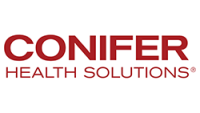Navigate the new norms in telehealth billing and coding practices
While telehealth has been around for decades, its adoption soared during the COVID-19 pandemic.
According to the American Medical Association, telehealth use grew 70% in 2020. While the use of telehealth since then has leveled off, it remains a valuable and popular care option. More than half of patients surveyed said they prefer telehealth for many aspects of their care, with convenience stated as a top reason.
Some industry experts project the use of telehealth will rise as a way to address issues such as the growing physician shortage. We have learned that the quality of care does not suffer when using telehealth and that telehealth is an effective way to expand access to care in rural and underserved areas.
Telehealth coding challenges
During the pandemic, new reimbursement codes were implemented so that providers could be paid fairly for using telehealth. Some of those changes have become permanent, such as those affecting Federally Qualified Health Centers, Rural Health Clinics and Rural Emergency Hospitals. The pandemic-related reimbursement changes for behavioral and mental health care are also now permanent.
Outside of the permanent changes, there are dozens of policy changes that impact ongoing telehealth coding. These involve a variety of stipulations, regulations and effective dates. In short, coding has become increasingly complex in our post-pandemic new normal. Just understanding the new modifiers implemented by government and commercial payers can be difficult. Likewise, documentation accuracy has become critical to ensure proper telehealth coding and appropriate reimbursement.
Between March 2020 and March 2022, there were more than 100,000 payer requirement changes identified by Experian Health alone.
Even before the changes to telehealth codes during the Public Health Emergency, staying on top of payer updates and state and federal regulations had become increasingly challenging. At the same time, coding compliance has become all the more critical due to greater scrutiny by payers. In 2019, CMS and the HHS Office of Inspector General handed out fines and penalties related to coding noncompliance of $2.5 billion and $3.7 billion, respectively. Issues with billing modifiers are a top reason for noncompliance. This includes knowingly using an incorrect provider identification number, failing to use modifiers properly, unbundling and upcoding the service level.
The financial impact of coding noncompliance includes increased denials, decreased per-visit revenue, poor key performance indicators, growing coding backlogs and greater stress for providers and their billing staff.
Telehealth billing and coding best practices
There are three essential strategies that organizations can implement to reduce the risk and financial impact of noncompliance: Implementing an education program, conducting internal audits and leveraging automation technology.
- Implement an education program
Staying abreast of payer and regulatory changes in telehealth coding can be challenging for even the most experienced coders. Having a comprehensive education program for all members of the billing team can help. According to the AAPC, educational curriculum for coders should include medical terminology, knowledge of insurance policies and familiarity with coding systems. Other essential elements to include are analytical and communication skills, time management and attention to detail.
Requiring continuing education credits is another excellent way to keep coders current on telehealth and complex billing changes. They should also be required to maintain certification as a Certified Professional Coder through organizations such as the AAPC.
- Conduct internal audits
Audits are invaluable for maintaining telehealth coding compliance because they can uncover coding and billing issues that could lead to denials, payer audits and fines. Thus, audits can help providers proactively address these issues before they impact patient care or reimbursement.
It is important that telehealth billing audits include actual samples of patient encounters just as they were coded and billed. To design an audit, MGMA suggests that providers need to “identify strategic initiatives, such as performance measures, validation of coded claims, prevalence of diseases, and treatments and adherence to policies and procedures to ensure compliance.”
Billing teams should collaborate with their organization’s chief compliance officer or compliance committee to monitor compliance. This is essential for detecting, remediating, and preventing noncompliance. Together, the billing team and compliance officer should establish an investigation process, risk-based plans and training. They should also develop processes around self-disclosures, cooperation and remedial action.
- Leverage automation technology
The use of AI in healthcare has received considerable attention recently, and for good reason. In addition to clinical applications, AI and related technologies like machine learning, natural language processing and robotic process automation offer significant value on the administrative side, especially for coding compliance.
Besides automating manual coding processes, automation technology can be used to conduct regular analyses of charts and clinical documentation. These analyses can highlight issues and errors so they can be proactively corrected. They can also be helpful in investigating coding issues after they have occurred, greatly reducing the time it takes for staff to research and correct the error.
Transforming telehealth
Telehealth is here to stay as it holds great promise for improving access to care in rural and underserved areas while also mitigating the growing physician shortage. Patients appreciate the convenience telehealth offers, especially for sensitive services like mental and behavioral health. Therefore, it is vital that providers build a team and process that ensures telehealth coding compliance and accurate, timely reimbursement.






